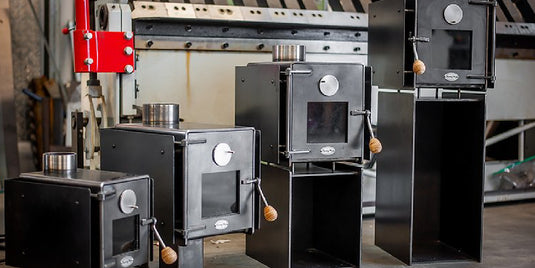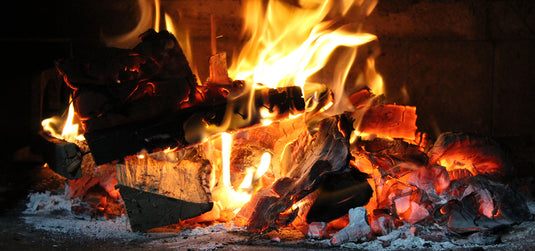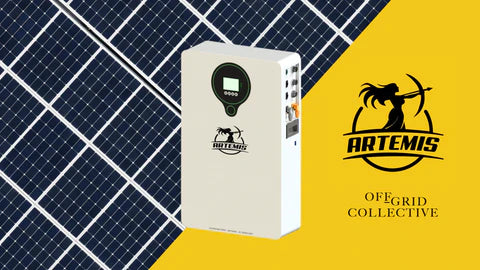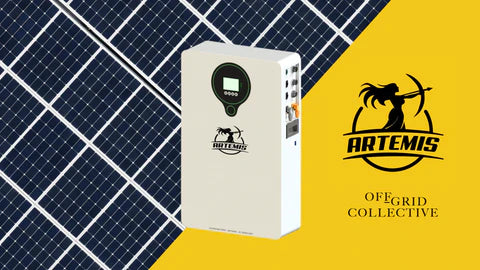We’ve been getting a lot of questions recently about Califonts so we’ve put together a summary of all the main questions we're asked about water heaters!
There are two main styles of Califonts available with the difference between the two styles being the ignition source. Your first option is battery ignition, this is achieved by 2 x D size batteries. The second option has 240V ignition, this style of Califont is the most commonly found on homes in urban areas and not as common in an off-grid situation.
Below we’ll talk about each style's basic operation and their pros and cons.
Battery Ignition Califont:
This is a simple low cost solution that is able to be installed anywhere as long as it has an adequate water supply. These califonts are fully manual in operation, meaning that you need to set the knobs on the front of the unit to set the output water temperature. To set your desired water temperature, you have two knobs on the front – the gas (flame) and the water knob; the gas knob controls the size of the flame and the water knob is a small restrictor valve that allows you to slow the flow rate of the water down, the slower the water flow the hotter the water.
If you are using a water pump, as most installations of this style of Califont will be, it is not always recommended to use a mixer tap in your shower or kitchen. The problem that commonly occurs when using a mixer tap is that this creates further back pressure that can cause damage to your pump. If your pump experiences large amounts of back pressure it can reach its shut off pressure, if the tap is running the pump will start to cycle and make a “chattering” sound, this is the pump motor rapidly turning on and off. If this “chattering” is commonly occurring we recommend getting an accumulator tank to include in the system and help take the load off of your pump.
A battery ignition system is highly dependent on water flow and pressure. If your water supply does not have enough pressure the califont will not ignite. This is also the same for the flow rate, if not enough water is flowing through the system it will not ignite, this is to prevent the unit from overheating. If you were to purchase a 5L Califont we would recommend a water pump with a flow rate of 5 litres per minute and a minimum pressure of 20psi. This allows you to use the water control knob and restrict the flow of water to achieve your desired temperature. For these reasons we do not recommend operating a califont on a gravity feed system as this is too hard to regulate the flow rate and pressure.
The most common issue we have experienced with using a battery ignition system is flat batteries, and this can include flat batteries straight out of the packet. The batteries have two functions within the califont, the first one is to create the spark and the second one is to open the gas solenoid to allow the gas to flow. It always pays to have a spare set of batteries on hand as the pair you are using may not have enough power to perform both functions. Just because you hear the unit sparking does not mean the gas is flowing and the unit will ignite.
The final factor to take into account when looking at purchasing a battery ignition system is the use in below freezing conditions.This style of califont does not have any frost protection and is required to be drained every night if a frost or below freezing conditions are expected. To do this you will need to have a water shut off valve in the water line before the califont, open a tap inside and then remove the drain plug in the bottom of the califont, this will allow all water to drain out and prevent any air pockets forming. If draining of the califont is not done and water remains inside the unit, then when the water freezes it will expand and split the pipes internally. Often to repair or replace the boiler unit inside the califont is an expensive exercise and it is often cheaper to purchase a new califont.
Pros:
- No power required, only batteries
- Can be used anywhere
- Easily portable
- Cost effective
Cons:
- Can be tricky to operate
- Temperature can be temperamental
- Not suited for use in freezing conditions
- Prone to large temperature fluctuations
240V Ignition Califont:
This is your most commonly found califont in urban areas where there is access to mains power and water, that is not to say these califonts can’t be used off the grid. A 240V ignition system can be operated on either mains power or through a solar system (inverter required). These califonts are fully automatic and generally come with a preset temperature of 55°C (this can be changed by a plumber/gasfitter at time of installation) and will always produce water at that temperature, you can then dial the temperature back by using a mixer tap. If you would like to adjust the output water temperature regularly there is the option to also purchase a control pad as an additional accessory. The internal computer of the califont will automatically adjust the flame and flow of the water to ensure that there is a constant temperature as per your settings.
You also do not have to worry about frosts and the water freezing inside the unit as they have built in frost protection and will briefly turn on to keep the inside warm and prevent the unit from freezing.
The power consumption on these units is incredibly low and you will barely notice the power usage on your solar system. When in standby mode the califont will only use 2-3W of power and when running a maximum of 55W, this is less than your TV will use!
If taking a 240V ignition system off-grid you will need an adequate pump to provide you with a constant water supply. Due to the larger size of the califont, and the higher flow rate/water pressure demand you will often need to invest in a larger size household pump. A 12V pump would not be able to provide adequate water supply, so a 240V pump is required.
Pros:
- Simple to use
- Automatic frost protection
- Constant water temperature
- Not constantly changing batteries
Cons:
- 240V power required
- Larger upfront investment cost
- Will not operate in a power cut
- Larger and bulkier in size
In our opinion a 240V Ignition Califont is superior and is the better option. You will have a far more reliable source of hot water and will not have to worry about the frosts. While a power source is required, more and more people are investing in solar when going off-grid and it is not often there is a setup that does not have an adequate power source.
 is here! Shop now, pay later in 4 easy installments
is here! Shop now, pay later in 4 easy installments






